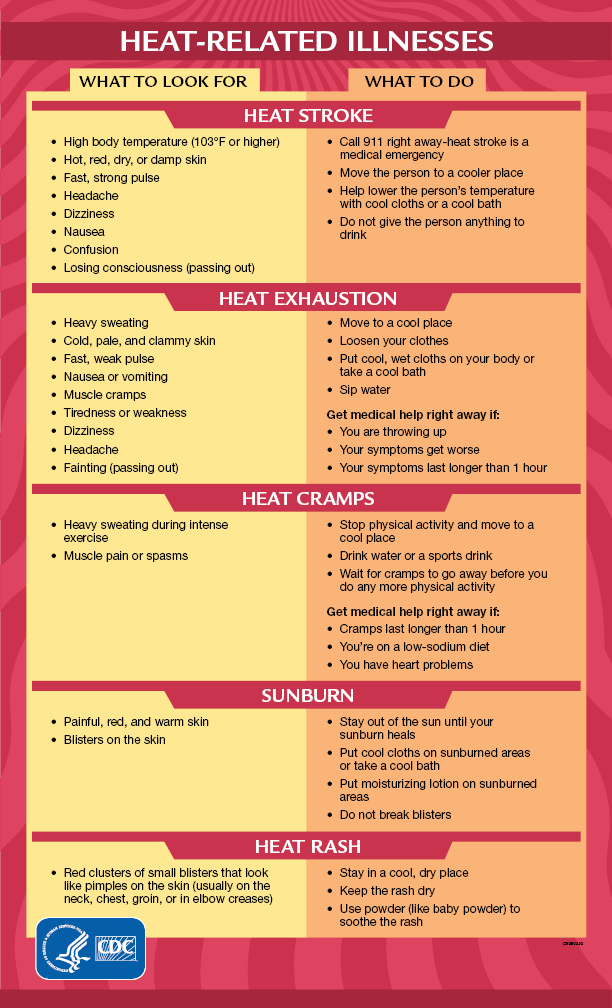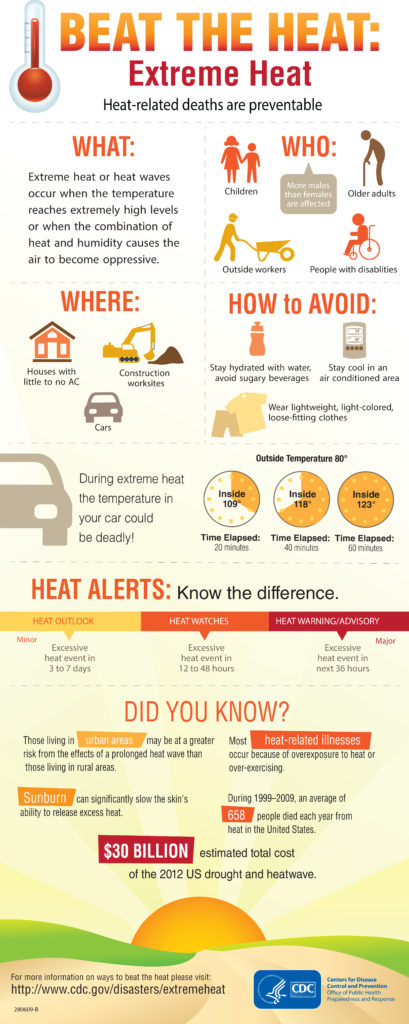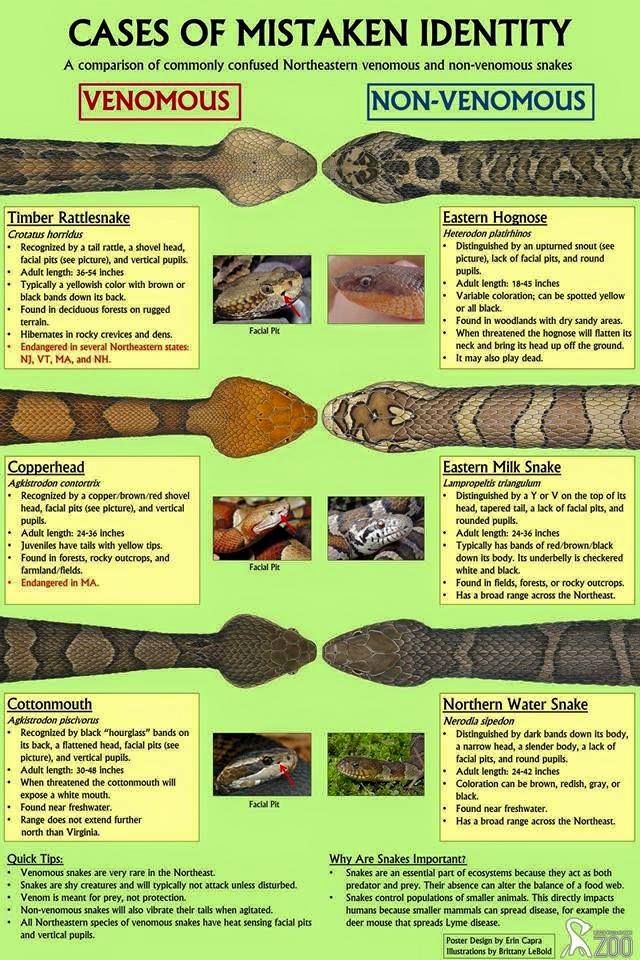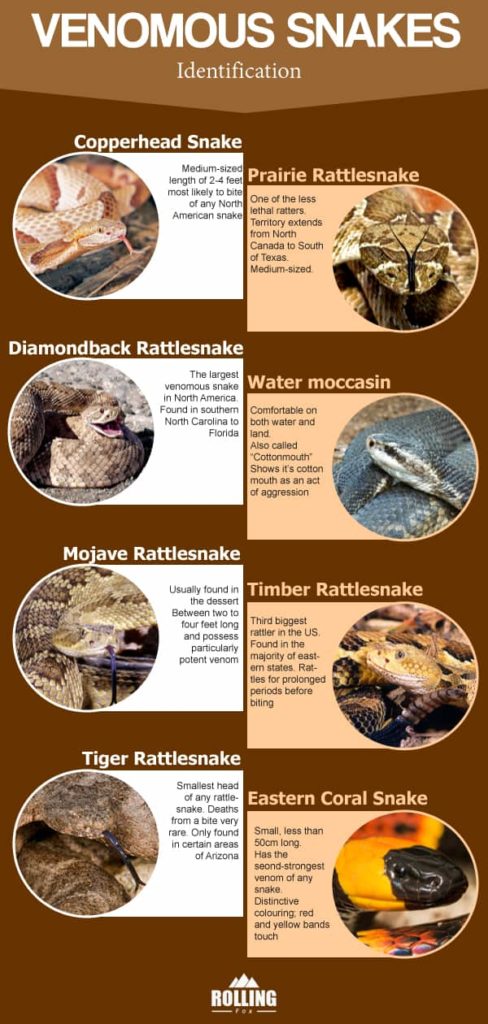The post Holiday Safety Tips appeared first on .
]]>Traveling for the Holidays? Be Prepared
Many people choose to travel during the holidays by automobile, with the highest fatality rate of any major form of transportation. In 2015, 355 people died on New Year’s Day, 386 on Thanksgiving Day and 273 on Christmas Day, according to Injury Facts 2017. Alcohol-impaired fatalities represent about one-third of the totals.
- Use a designated driver to ensure guests make it home safely after a holiday party; alcohol, over-the-counter or illegal drugs all cause impairment
- Make sure every person in the vehicle is properly buckled up no matter how long or short the distance traveled
- Put that cell phone away; many distractions can occur while driving, but cell phones are the main culprit
- Properly maintain the vehicle and keep an emergency kit with you
- Be prepared for heavy traffic, and possibly heavy snow

Even Angel Hair can Hurt
Decorating is one of the best ways to get in a holiday mood, but emergency rooms see thousands of injuries involving holiday decorating every season.
- “Angel hair,” made from spun glass, can irritate your eyes and skin; always wear gloves or substitute non-flammable cotton
- Spraying artificial snow can irritate your lungs if inhaled; follow directions carefully
- Decorate the tree with your kids in mind; move ornaments that are breakable or have metal hooks toward the top
- Always use the proper step ladder; don’t stand on chairs or other furniture
- Lights are among the best parts of holiday decorating; make sure there are no exposed or frayed wires, loose connections or broken sockets, and don’t overload your electrical circuits
- Plants can spruce up your holiday decorating, but keep those that may be poisonous (including some Poinsettias) out of reach of children or pets; the national Poison Control Center can be reached at (800) 222-1222
- Make sure paths are clear so no one trips on wrapping paper, decorations, toys, etc.; NSC provides tips for older adults on slip, trip and fall protection
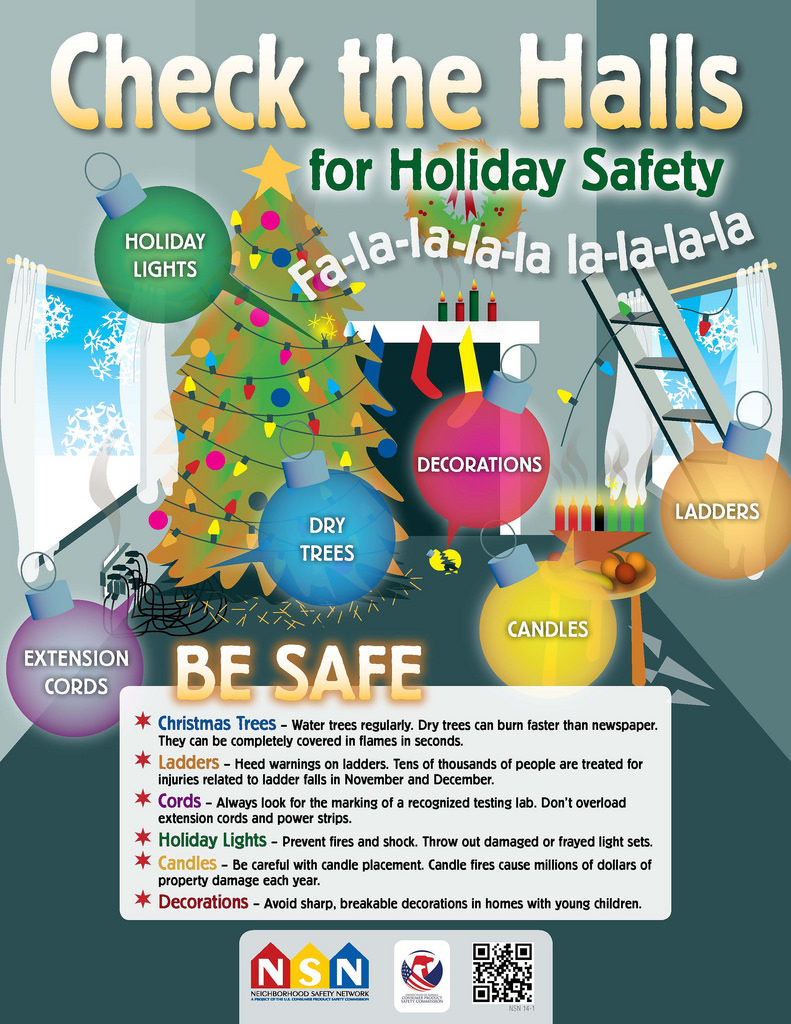
It’s Better to Give Safely

We’ve all heard it’s important when choosing toys for infants or small children to avoid small parts that might prove to be a choking hazard. Here are some additional gift-related safety tips:
- Select gifts for older adults that are not heavy or awkward to handle
- Be aware of dangers associated with coin lithium batteries; of particular concern is the ingestion of button batteries
- For answers to more of your holiday toy safety questions, check out this Consumer Product Safety Commission blog
- Be sure to check which toys have been recalled
Watch Out for Those Fire-starters
Candles and Fireplaces
Thousands of deaths are caused by fires, burns and other fire-related injuries every year, and 12% of home candle fires occur in December, the National Fire Protection Association reports. Increased use of candles and fireplaces, combined with an increase in the amount of combustible, seasonal decorations present in many homes means more risk for fire.
- Never leave burning candles unattended or sleep in a room with a lit candle
- Keep candles out of reach of children
- Make sure candles are on stable surfaces
- Don’t burn candles near trees, curtains or any other flammable items
- Don’t burn trees, wreaths or wrapping paper in the fireplace
- Check and clean the chimney and fireplace area at least once a year

Turkey Fryers
While many subscribe to the theory any fried food is good – even if it’s not necessarily good for you – there is reason to be on alert if you’re thinking of celebrating the holidays by frying a turkey.
The Consumer Product Safety Commission reports there have been 168 turkey-fryer related fires, burns, explosions or carbon monoxide poisoning incidents since 2002. CPSC says 672 people have been injured and $8 million in property damage losses have resulted from these incidents.
NSC discourages the use of turkey fryers at home and urges those who prefer fried turkey to seek out professional establishments or consider a new oil-less turkey fryer.
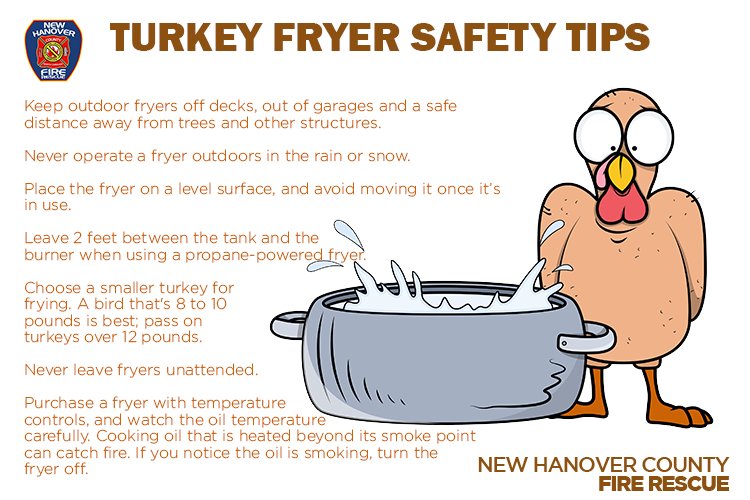
Don’t Give the Gift of Food Poisoning
The U.S. Department of Health and Human Services provides some holiday food safety tips. Here are a few:
- Do not rinse raw meat and poultry before cooking
- Use a food thermometer to make sure meat is cooked to a safe temperature
- Refrigerate food within two hours
- Thanksgiving leftovers are safe for four days in the refrigerator
- Bring sauces, soups and gravies to a rolling boil when reheating
- When storing turkey, cut the leftovers in small pieces so they will chill quickly
- Wash your hands frequently when handling food

Have a Very Happy And Safe Holiday Season!
The post Holiday Safety Tips appeared first on .
]]>The post Real Combat Judo appeared first on .
]]>Barron is a Jodoka that has also been there and done that when it comes to street violence. His book, Real Combat Judo, is a great bridge between traditional Judo and practical self-defense. As a boxer and combatives practitioner, Baron knows how to strike, but he also knows how to effectively throw an opponent to use the ground itself as the striking surface. This comes from Judo.
Real Combat Judo is not your traditional Judo manual. I have a number of those on my shelf too, and they usually consist of a catalog of different Judo throws and techniques. This book has a smaller amount of techniques, but contains instruction on how to actually use the throws in the various self-defense situations Barron covers. The book illustrates how to perform a throw, and then provides drills and training instructions.
The photographs are clear, and the instruction is detailed. I will note that sometimes the descriptions become a bit repetitive, but I find that better than having to refer back to a different page in the book to see the part of the technique being taught that is the same. This is a book to use, not just read through cover to cover.
To use this book, like any martial art instructional manual, you will need a training partner and a safe place to throw each other. If you are not competent in breakfalls, make sure you practice these first. (Barron does provide brief instruction on these at the beginning of the book.) Once you have a partner, location, and breakfall skill, you can start throwing each other with control as you learn these throws. Yes, if you have a back ground in martial arts, it will come easier, and a live instructor or coach will always beat a book or video. However, you can learn from different media if you are committed. As a resource for learning how to actually use Judo for self-defense, Barron Shepherd’s Real Combat Judo should be on your shelf and a go-to book when you are training.
Video Review of Real Combat Judo by Barron Shepherd:
The post Real Combat Judo appeared first on .
]]>The post Be Active In Warm Weather Safely appeared first on .
]]>There is a risk of heat related sickness and even fatalities in hotter weather. According to the Centers for Disease Control and Prevention, from 2004 to 2018 an average of 712 heat-related deaths occurred in the U.S. annually, and extreme heat sends more than 65,000 Americans to the emergency room each year.
There are things you can do to prevent heat stress and the risks that come with hotter weather.
Effects of Heat
Heat can cause minor symptoms, such as heat cramps, to life-threatening conditions such as heat exhaustion and heatstroke. Before we look at these, let’s examine the body’s natural mechanism to regulate body temperature: Sweating. The hypothalamus, a part of the brain, helps govern the body’s baseline temperature (roughly 98.6 F). When your temperature becomes too high or low, the brain sends signals to organs, muscles, and the nervous system to do what it needs to do to get the body back to normal. (sweating, shivering, etc.)
Temperatures of more than 104 F combined with relative humidity of 60% can weaken the body’s cooling mechanism and can affect the body’s ability to function. This can cause damage to the brain and major organs. This is why ignoring heat, and ignoring the first signs of heat stress can lead to dangerous conditions and even death.
Heat Symptoms
These are some of the common symptoms to look out for:
Heat Cramps typically occur after intense exertion in high heat and cause thirst, sweating, fatigue, and painful cramps in the arms, legs, or abdomen.
Heat Exhaustion is brought on by excessive loss of salt and water. It can result in weakness, headache, thirst, vomiting, muscle cramps and dizziness. If treated promptly, the symptoms typically last 30 to 60 minutes or less, with complete recovery within 24 to 48 hours.
Heatstroke occurs when the body loses the ability to sweat and fails to cool down. It is a life-threatening condition and needs urgent medical attention. Symptoms include hot and dry skin, high fever, rapid heart rate, confusion, fatigue, dizziness, nausea, seizures, and unconsciousness. Without promptly addressing symptoms, heatstroke can cause damage to the brain and internal organs, and death.
Who’s At Risk
When we look at the groups that are at highest risk for heat injury, they include the very young, the very old, people who are less fit, and those who partake in extreme sports for long periods. Additionally, people who are obese, have chronic medical conditions, who are on certain medications, work outdoors, or who work in hot indoor conditions can also be at higher risk.
Prevention
Preventing heat injuries can be accomplished by proper preparation and good preventive care. I was a fitness fanatic when I was in the Army, and I know my better fitness helped me deal with the heat more easily. I also made sure to stay hydrated. And maybe I’m just less prone to heat injuries than some, as heat has never really bothered me much. Here are a few things you can do to reduce risk.
Dress light and wear a hat. Lightweight, light-colored, loos-fitting clothing allows air circulation and transfers heat away from the body. Light colors and fabrics such as cotton, loose linen and rayon keep the body cool. Sun protective clothing and a well vented, wide-brimmed hat or a loose cotton bandanna help regulate body heat. And even if you don’t have the “best” protective headgear, anything can be better than nothing. So use whatever hat you have available, and improvise if you must, just protect your head from the sun.
Stay hydrated. This is important, so I’ll say it again, Stay hydrated. Drink plenty of water during hot weather. The more you exercise or exert yourself, the more water you will need. While water is usually considered the best, other fluids will also help you stay hydrated, as well as eating foods with high water content. Foods such as watermelon, strawberries, blueberries, raspberries, tomatoes, cucumbers, cantaloupe, cabbage, celery, spinach and zucchini are not only very healthy for you, but they are also good foods to heat during hot weather to help you stay hydrated.
Limit exertion during hottest times. If possible, refrain from exercising or exerting yourself during the hottest midday heat. Schedule training and work, if you can, during the cooler parts of the day. If you must work or exercise in the heat, shorten the intensity and duration to reduce risk, and wear moisture-wicking fabrics. Stop if you begin to overheat. Get to the shade or inside someplace cool. An icepack to the back of your neck can help you cool down, and be sure to drink plenty of cold water or a sports drink if you prefer.
Be Informed. Pay attention to the forecast to know the temperature and heat index for the times and locations you will be at, and plan accordingly. Summer is a time to have a lot of fun. Just be aware of the heat, how it can affect you, and enjoy your summer safely!
- Suja Natarajan’s article Hot Topic in the July 21 edition of Costco Connection was a source for helping with this article.
- Graphics from CDC
What to Do for Heatstroke
Heatstroke can be life-threatening. Know how to identify early signs and then:
- Call 911.
- Move the person to a shaded and cool area and raise their legs and feet slightly.
- Loosen the person’s clothes and remove unnecessary clothing, shoes, and socks.
- Rehydrate the person with water or a sports drink.
- Lower the person’s body temperature with a cold compress or fans.
- Monitor the person’s temperature every few minutes.
The post Be Active In Warm Weather Safely appeared first on .
]]>The post Beware of Snakes appeared first on .
]]>Here’s what the Reader’s Digest Action Guide: What To Do In An Emergency has to say about Snakes:
Most snakes are timid creatures that attack only when startled or cornered. Even a poisonous snake will usually slither away before you get near it. But if you are bitten, you have a good chance of surviving.
Snakes are cold-blooded creatures that seek hot places when its cool. They will bask on sun-bathed rocks and ledges. When it is hot, they are found under rocks, logs, or leaf piles. They also occupy caves, crevices, shady ravines, swamps or rivers.
Although many of the snakes you might encounter are harmless, all should be treated with extreme caution. If poisonous snakes are found in your area, learn to recognize them and to know their behavior and habitats.
- If you go walking in areas where snakes are likely, keep to paths and wear hiking boots and long pants to protect your feet and ankles – the commonest targets of a striking snake.
- In the woods, never step over logs without first looking on the other side. If you plan to sit in the shade, first examine the ground carefully for snakes.
- In rocky areas, watch for snakes lying on ledges above or below your path. Never place your hand on a surface that you cannot see.
- If you see any snake, stop at once and move quickly to at least 20 ft. (6 m) from it.
- If you do get bitten, clean the wound and bandage it firmly. Keep the injured limb low.
- If you have killed the snake, bring it to the hospital. Be careful: a dead snake can still bite from reflex. If possible, decapitate the snake and bury the head under a log or a rock.
Here is an additional Snake Safety resource from the US Forest Service in Idaho:
The post Beware of Snakes appeared first on .
]]>The post Bill Meyer Talks appeared first on .
]]>The post Bill Meyer Talks appeared first on .
]]>The post Newsmakers with Brent and Dave Interview appeared first on .
]]>
I was interviewed by Newsmakers with Brent DeHart and Dave Bourne out of Salem, OR, on 5/18/21.
Check out Brent and Dave here: KYKN Newsmakers Podcast
Learn more at Survive a Shooting
The post Newsmakers with Brent and Dave Interview appeared first on .
]]>The post Erick Erickson Show Interview appeared first on .
]]>Check out the Erick Erickson Show: https://www.erickericksonshow.com/
Learn more at Survive a Shooting
The post Erick Erickson Show Interview appeared first on .
]]>The post Utility Scam Alert appeared first on .
]]>
I just received this from NorthWestern Energy and want to warn people.
Beware of increased utility service scam activity!
Many electric and natural gas customers throughout the country are being targeted by imposter utility scams.
Here are a few common signs of potential scam activity:
Threat to disconnect: The imposter utility representative aggressively tells the customer his or her account is past due and service will be disconnected if a large payment is not made.
Request for immediate payment: The caller instructs the customer to quickly purchase a prepaid debit card – widely available at retail stores.
Request for prepaid debit card info: The caller asks the customer for the prepaid debit card’s number, which grants the caller instant access to the card’s funds.
For more information on common scams and how to spot them, visit Utilities United Against Scams at utilitiesunited.org
The post Utility Scam Alert appeared first on .
]]>The post Putting Masks To The Test appeared first on .
]]>The post Putting Masks To The Test appeared first on .
]]>The post Hand-To-Hand Lessons from the U.S. Navy appeared first on .
]]>
Many today want to reinvent the wheel. This is especially true in martial art and self-defense circles. People want to create their own styles, systems, and martial arts. And while there have definitely been advancements and improvements when it comes to training, nutrition, and equipment, there is still much to be gained by studying the tried and true principles, concepts, and techniques that have been around not only for decades, but sometimes centuries.
In 1943, the United States Naval Institute put out a series of training manuals, including one on hand-to-hand combat prepared by the officers in charge of the instruction of Hand-To-Hand Combat in Naval Aviation. This manual might be dismissed as old and archaic by some, but in fact there are many truths found in this classic text that are still relevant today. The manual starts out by saying there is nothing glamorous or adventurous about hand-to-hand combat, but rather it is simply a cold, efficient method of overcoming your enemy in a manner most suitable to the performance of your mission or the saving of your life. Seems pretty accurate and practical doesn’t it? It was deemed necessary for Naval personnel to be trained in hand-to-hand combat, and there was one simple objective: to WIN!
Today’s self-defense encounters have the same objective. When it is between living or drying, or even being seriously wounded, you must win. In a real self-defense situation, there are no rules, there is nothing sporting about it, there are not referees and no fouls are considered. It’s exactly like the U.S. Navy taught decades ago, “You do to the enemy exactly what he would like to do to you – only, you do it first!”
I teach people how to defend themselves for the same reason the U.S. Navy taught hand-to-hand combat. It provides an additional and vital means of self preservation and increases your chances of surviving a life-and-death struggle. It also increases your chances of escaping a would-be-assailant. A lot can be learned from studying the older manuals and guides to unarmed combat. And as I’ve illustrated, much can be applied to modern self-defense situations. While there are many lessons and techniques found in this text, I’d like to share two important lessons from the U.S. Navy Hand-To-Hand Combat manual.
- “When the critical moment arrives and it is either you or the other fellow in a life and death struggle, it is up to you to use the quickest and deadliest method of liquidating your enemy. Whether you be unarmed, armed with a club, knife, wire, gun, rock, bottle or other weapon, use your feet, hands or weapons to the greatest advantage.”
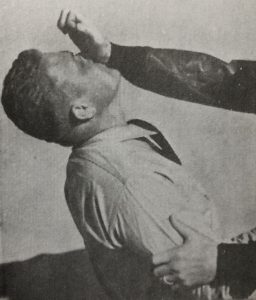
Obviously, this manual was written for those going to war, where killing the enemy before he had a chance to kill you was paramount. But this principle is still important for civilians. You must do whatever it takes, with whatever you have, to keep yourself alive. Certainly, if you can stop an attacker without using lethal force, that is preferred. But in a life-or-death situation where lethal force is the only way to stop an attacker and prevent serious bodily harm or death to yourself or someone else, you must be prepared to do whatever it takes to survive, including using lethal force yourself. You must use whatever you have to your greatest advantage. You must win!
- “A word of caution, however – don’t become too complicated with club maneuvers. Simplicity of action in most cases is far more rapid than complex maneuvers.”
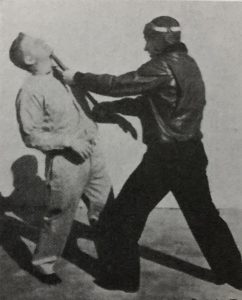
This passage was found in the section on using a club, but is universally true with any form of combat, empty handed or with a weapon. Simplicity of action in most cases is far more rapid than complex maneuvers. Simple gross movements are most often the best for defending yourself. This is true regardless of the weapon or empty handed technique used. This is why the core of most effective means of defending yourself consist of simple techniques and actions. We don’t need to complicate things. In fact, we shouldn’t complicate things. We should strive for simplicity and effectiveness. These really are keys to defending yourself. Keep things simple and keep things effective.
I’m not against the progression of styles and systems, nor do I deny the advancements I mentioned at the beginning of this article. However, I do believe we mustn’t forget the lessons of the past, because many of them are just as applicable today as they were when taught years ago.
U.S. Navy Training Film
Here is a video I found that is an old U.S. Navy Training film from the same time frame of the manual I quoted above.
The post Hand-To-Hand Lessons from the U.S. Navy appeared first on .
]]>
